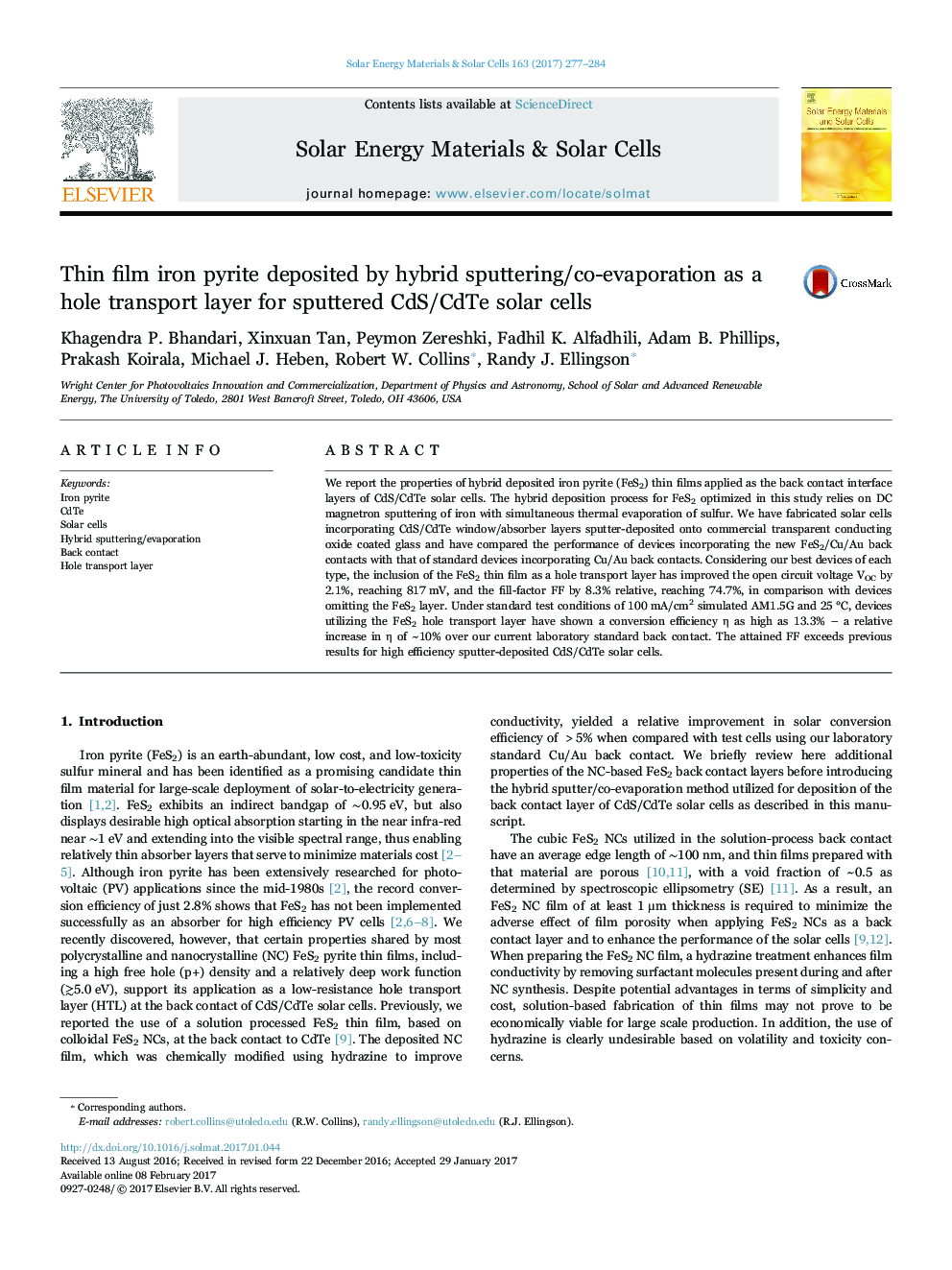| کد مقاله | کد نشریه | سال انتشار | مقاله انگلیسی | نسخه تمام متن |
|---|---|---|---|---|
| 6457251 | 1420660 | 2017 | 8 صفحه PDF | دانلود رایگان |

• We demonstrate polycrystalline iron pyrite thin films as hole transport layers (HTLs) for CdS/CdTe solar cells.
• A novel method is used to prepare the FeS2 thin films, based on sputtering iron and co-evaporating sulphur.
• The VOC and FF increase by 2.1% and 8.3% respectively, for an increase in efficiency of ~10 % relative to our standard laboratory back contact.
• Our achieved FF exceeds that of the record reported CdS/CdTe all-sputtered solar cell.
• The barrier height of the FeS2/Cu/Au back contact is reduced by ~130 meV relative to that of a Cu/Au contact.
We report the properties of hybrid deposited iron pyrite (FeS2) thin films applied as the back contact interface layers of CdS/CdTe solar cells. The hybrid deposition process for FeS2 optimized in this study relies on DC magnetron sputtering of iron with simultaneous thermal evaporation of sulfur. We have fabricated solar cells incorporating CdS/CdTe window/absorber layers sputter-deposited onto commercial transparent conducting oxide coated glass and have compared the performance of devices incorporating the new FeS2/Cu/Au back contacts with that of standard devices incorporating Cu/Au back contacts. Considering our best devices of each type, the inclusion of the FeS2 thin film as a hole transport layer has improved the open circuit voltage VOC by 2.1%, reaching 817 mV, and the fill-factor FF by 8.3% relative, reaching 74.7%, in comparison with devices omitting the FeS2 layer. Under standard test conditions of 100 mA/cm2 simulated AM1.5G and 25 °C, devices utilizing the FeS2 hole transport layer have shown a conversion efficiency η as high as 13.3% – a relative increase in η of ~10% over our current laboratory standard back contact. The attained FF exceeds previous results for high efficiency sputter-deposited CdS/CdTe solar cells.
Journal: Solar Energy Materials and Solar Cells - Volume 163, April 2017, Pages 277–284